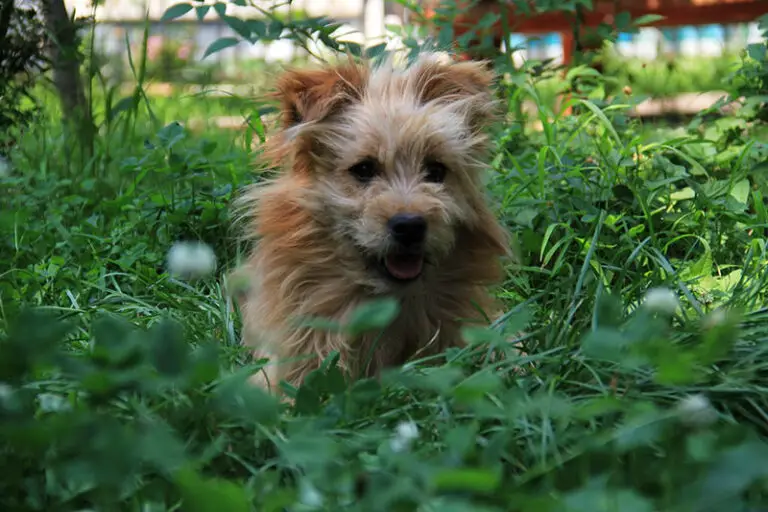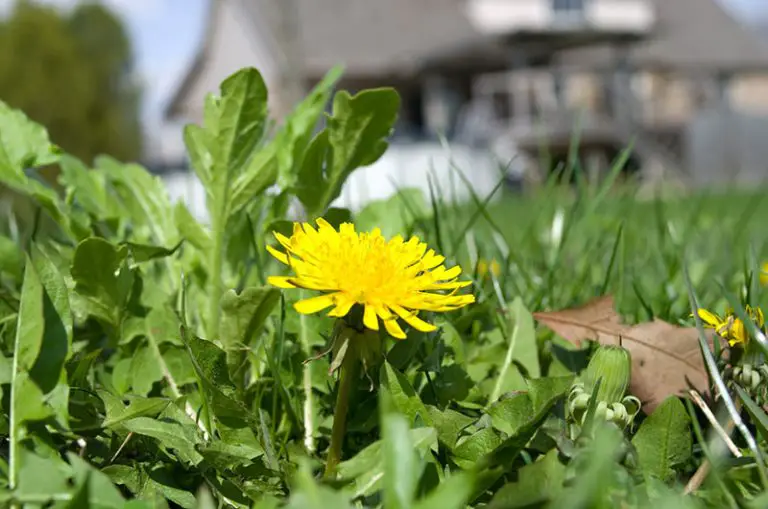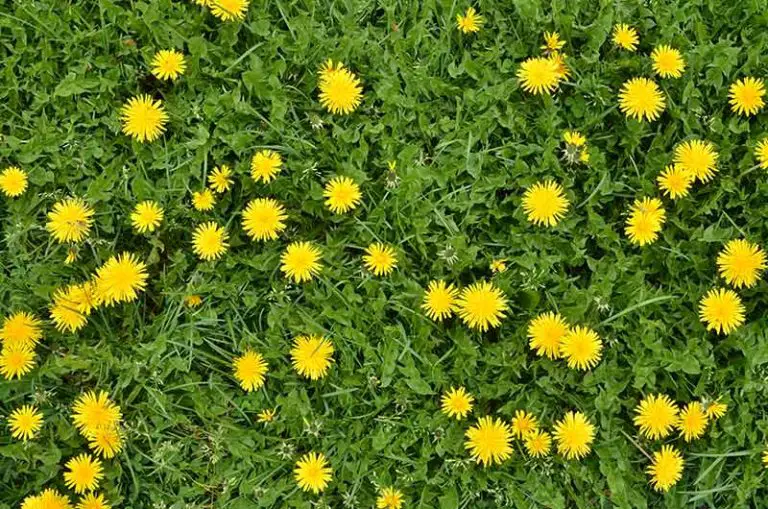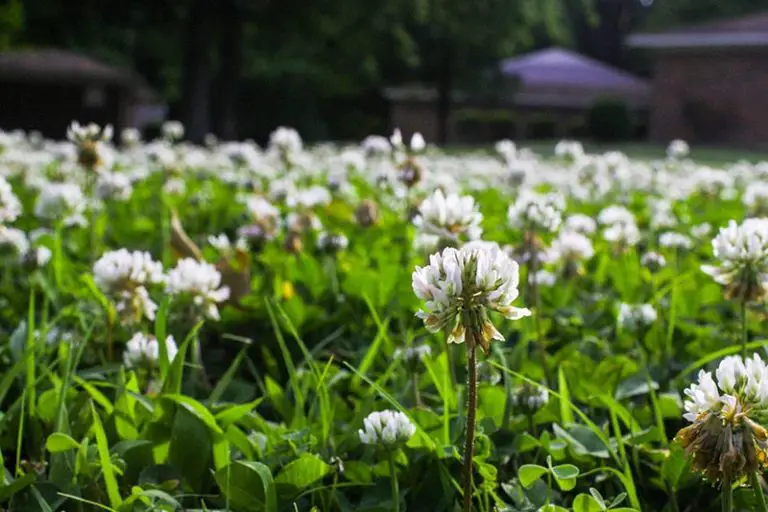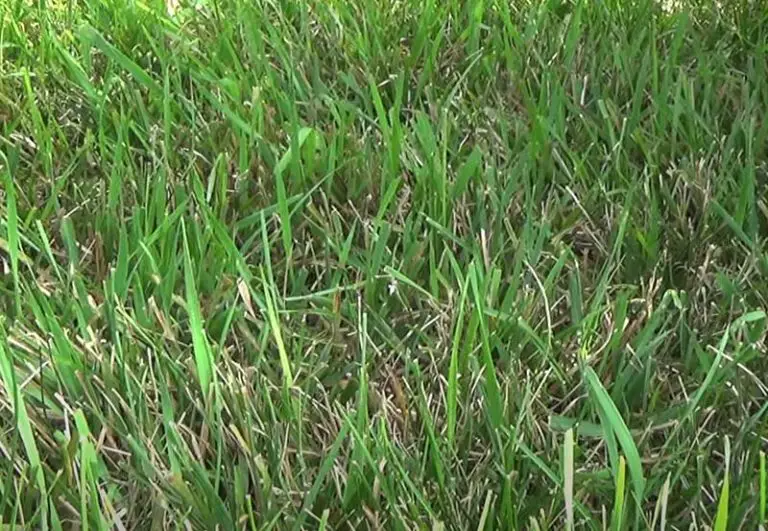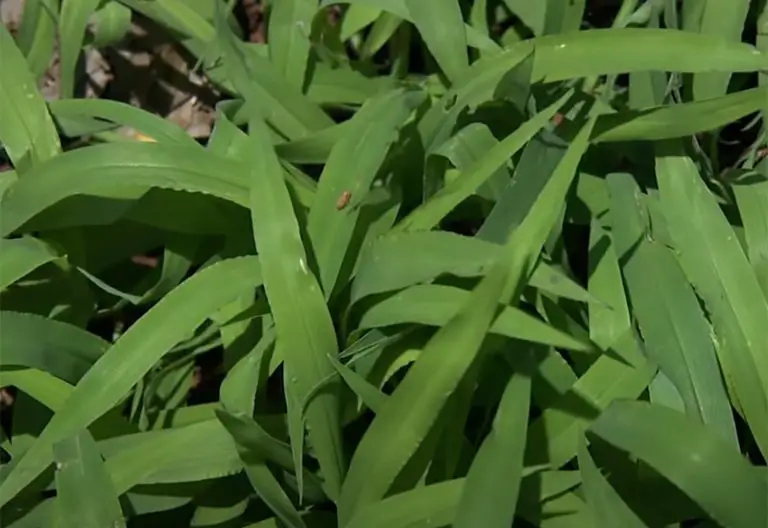How to Get Rid of Chickweed in a Lawn or Garden
Also known as starwort and satin flower, chickweed is an invasive cool-season weed common to US lawns. As it flowers continuously throughout the growing season, chickweed is notoriously difficult to control. However, there are several measures you can take to get rid of chickweed in a lawn or garden and prevent it from returning.
You can get rid of chickweed naturally by removing it by hand, mowing the lawn, tilling the soil, or smothering it with mulch or garden material. Chemical solutions to get rid of chickweed fast include the application of either a selective broadleaf weed killer or a non-selective weed killer containing glyphosate.
Read on to learn more about chickweed identification and prevention, including guidance on how to get rid of chickweed using natural or chemical methods.
What is Chickweed?
Chickweed is an invasive broadleaf weed that grows in countries throughout the world, being an extremely common lawn weed in the US. It is a cool-season annual weed, growing in the cool fall weather through to the mild temperatures in spring. Chickweed is so widespread throughout the US and beyond as it is highly adaptable to the majority of environmental conditions.
What Does Chickweed Look Like?
In general, chickweed has light to dark green oval-shaped leaves and produces small white flowers with five forked petals. The exact appearance of chickweed varies slightly between the two main types, common chickweed and sticky mouse-eared chickweed; the main distinction between the two is that the latter is covered in fine hairs. In a lawn or garden, both varieties of chickweed form lush, dense mats.
Chickweed Identification
As we’ve mentioned, there are two main types of chickweed common to US yards: common chickweed and mouse-eared chickweed. We have provided information below to help you identify which type of chickweed you’re dealing with on your lawn.
Common Chickweed
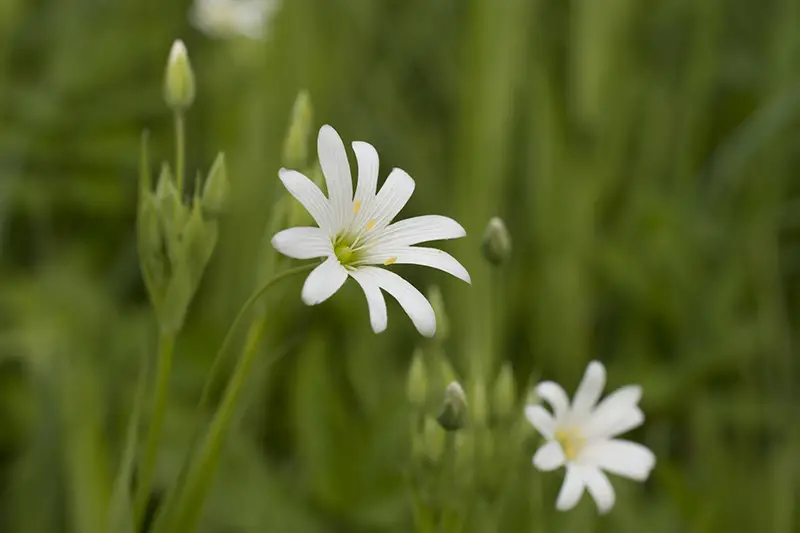
Common Chickweed Life Cycle
Common chickweed is an annual weed, meaning it only lives for one year before dying completely. It begins germination during the mid-to-late summer, thriving over winter before dying off the next spring. Towards the end of their life cycle, the common chickweed plants produce thousands of seeds each which will begin to germinate the following season.
Common Chickweed Stems & Leaves
The stems of the mature chickweed plants are almost entirely smooth apart from one or two rows of fine hairs. The stems and leaves are a light green color, with the stems laying close to the ground. The leaves are lance-shaped to oval-shaped and have a pointy tip, and they also have a fold along the leaf midvein.
Common Chickweed Flowers & Fruits
Common chickweed plants produce small white flowers with five white branched petals, creating the illusion of ten petals. They flower continuously and produce brown, oval-shaped seed-containing fruit capsules that contain 8 to 10 seeds each.
Sticky Mouse-Eared Chickweed
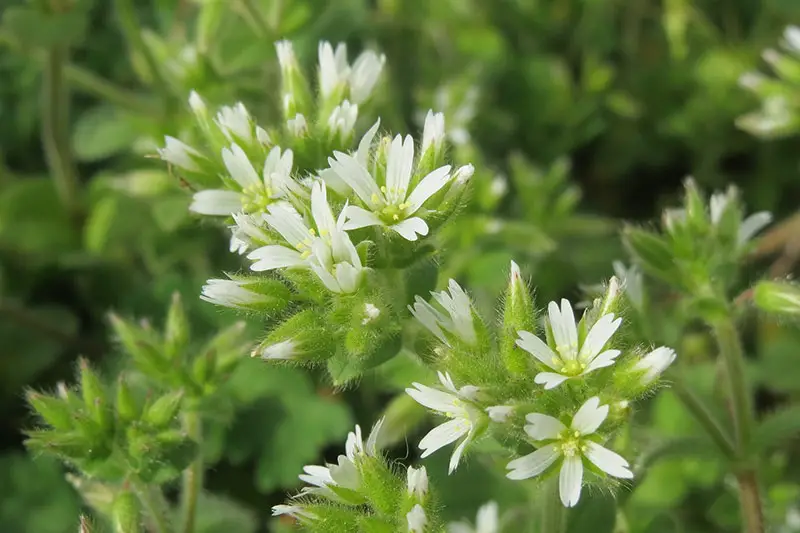
Sticky Mouse-Eared Chickweed Life Cycle
Sticky mouse-eared chickweed is a perennial weed, meaning the same weed plants will continue to grow year on year. If you don’t get rid of mouse-eared chickweed, the weeds will spread throughout your yard by reseeding themselves in the soil. These weeds can also grow new roots from their nodes (nodes are the points where the stem and leaves meet) if the stem makes contact with the bare soil.
Sticky Mouse-Eared Chickweed Stems & Leaves
Mature sticky mouse-eared chickweed is differentiated from common chickweed by its stems and leaves; they are densely covered with fine, spreading hairs, whereas common chickweed is smooth. The leaves of mouse-eared chickweed vary in shape, with lower leaves being egg-shaped, and upper leaves being more lance-shaped. They lack the pointed tips that common chickweed leaves have, and are smaller and darker green in color. As the name suggests, sticky mouse-eared chickweed feels sticky to the touch due to secretions made from the plants’ hairs.
Sticky Mouse-Eared Chickweed Flowers & Fruits
Mouse-eared chickweed plants also produce small white flowers that have five white branched petals, making it appear as though the flower has ten petals. The weed has distinctive fine hairs covering the flowers. The fruits of mouse-eared chickweed look like narrow cylindrical capsules that contain reddish-brown seeds.
Where Does Chickweed Grow?
Chickweed grows most prolifically in cool, damp environments. It prefers soil that is soft, rich, and recently disturbed. For this reason, it is very common in lawns and around agricultural land.
When Does Chickweed Grow?
Chickweed will begin to grow whenever the soil temperatures are consistently around 35 to 75°F. It is tolerant to temperatures as low as the teens, but it grows most aggressively when the average temperature is in the 40s. When temperatures reach the 90s in the summer, the chickweed plants will die off, before starting the cycle all over again in the fall.
What Encourages Chickweed in a Lawn or Garden?
In general, chickweed takes over planting areas that have cool, damp soil, with a neutral soil pH and high nitrogen content.
Damp Soil
Chickweed grows most voraciously in moist soil. If you have an infestation of chickweed in your lawn or garden, this could indicate that the area has drainage issues due to compacted or uneven soil. These conditions may also be caused by over-watering the soil.
Soil pH and Nitrogen Levels
Chickweed thrives in soils with a neutral pH and high nitrogen levels. Oppositely, chickweed will grow poorly in soils that have a low pH.
Soil Temperature
As chickweed is a cool-season plant, it will thrive in soils that have constant temperatures between 12°C and -20°C
Partial or Full Sunlight
Like all weed seeds, chickweed needs some access to sunlight to germinate and grow. With that said, chickweed is shade tolerant, meaning it will thrive in a partially shaded area and compete with other plants that don’t tolerate the shade as much.
Thick Thatch Layer
Having a thick thatch layer can cause chickweed to grow in a lawn. Thatch is the layer of matted organic material that sits in between your grass plants and the soil surface. Chickweed seeds like to grow in this thatch layer, which is why it may contribute to a chickweed infestation on your lawn.
Malnourished Grass
Chickweed takes over lawns that have thin or malnourished grass. When a lawn has unhealthy grass, it leaves the soil susceptible to being overtaken by weeds like chickweed. In addition to spreading by seed, chickweed spreads through new roots it grows through its nodes where it’s able to make contact with bare soil. It is because of this that chickweed will quickly take over a patchy lawn full of weakened grass.
Mowing Too Low
If the chickweed infestation is on your lawn, this may be a symptom of mowing the lawn too low. When you mow the grass shorter than ⅓ of its total height, it causes the grass plants to become stressed and weak. Consequently, this gives weeds like chickweed more opportunity to spread and outcompete the grass plants. Also, when the grass is shorter, the soil surface is more exposed to sunlight, and therefore weed seeds are more likely to germinate and take root.
How to Get Rid of Chickweed in Lawn or Garden Naturally
Before you reach for the chemicals, try to get rid of chickweed naturally using the methods explained below.
Remove Chickweed By Hand
Chickweed can be removed by hand relatively easily as it has a shallow root system. The moist soil conditions accompanied by a chickweed infestation also ease the removal process. This makes it easy to remove the chickweed plant and its entire root system from the soil.
Method: Using your hands or a digging tool such as a hoe, gently loosen the soil along the chickweed plant’s roots. Pull up the chickweed by grasping it with your hand or using your tool, removing the entire plant and root system. Bag the pulled weeds and dispose of them in your trash; avoid placing them on your compost pile, as this can reintroduce the seed back into your soil. If you’re carrying this method out on a lawn, overseed any bare spots leftover from the removal.
Mow the Lawn
Mowing the lawn is an easy method to get rid of chickweed naturally. When you mow the grass and take out the chickweed with it, you interrupt the weed’s life cycle. Instead of being able to mature, flower, produce seeds, then restart the cycle all over again, the chickweed dies off.
Method: Keep up with a regular mowing schedule to prevent the chickweed from growing flowers, thus preventing it from producing seeds. Mow the areas of your lawn suffering from the infestation at least once a week to stop the chickweed from spreading. Avoid letting the grass grow above 4 inches high, as this is the height it becomes susceptible to chickweed growth.
Till the Soil
Tilling the soil in your garden can help to get rid of chickweed. Tilling is the process of turning over and breaking up the soil using a hoe, spade, or rototilling equipment. This process prevents chickweed growth by disturbing the weeds, making it hard for them to establish roots in the soil. Any established roots are turned up and exposed, causing them to die off. Tilling also blocks the chickweed’s access to sunlight and air by covering the weeds with a thick layer of soil.
Method: Using a hoe, spade, or rototiller, till the soil in between your desired plants in the affected area. Make sure to till so much that the top 8 inches of soil are dug up. We have gone through the process of tilling in more detail in our article Tilling Soil.
Smother Chickweed With Material
You can kill chickweed in a garden by smothering it with material. Covering the soil that’s infested with chickweed cuts off the weed’s supply of oxygen, thus smothering it and killing it off. This is ideal for planting areas like rosebeds or vegetable gardens taken over by chickweed, as it allows you to get rid of a large amount of chickweed naturally with minimal effort. Take note that if you use this method on a lawn, it will kill the grass plants too.
Method: Find a suitable covering material that will block the supply of both air and light to the soil surface. We suggest using a tarp, canvas, garden fabric, or newspaper. Spread your covering material of choice over the affected area, and weigh the corners down using weights or heavy objects. Place the weights strategically to prevent the covering from being blown away in the wind. After a minimum of 2 weeks, check the state of the chickweed plants; if they aren’t completely dead, keep the covering on for about a week longer. Once they have completely died off, remove the covering, till the soil, and replant the area.
Smother Chickweed With Mulch
You can get rid of chickweed by smothering it with a thick layer of mulch. There are a number of benefits that come from mulching your soil, including weed control. The mulch layer blocks sunlight from reaching the soil surface, preventing weed seeds from germinating. It also works to smother growing weeds, including live chickweed plants. A well-mulched garden results in healthier plants that are able to better outcompete weed growth.
Method: Choose an organic mulch with a dense texture, such as wood chips, bark, or leaves. Spread the mulch over the affected area in a layer that’s at least 2 to 3 inches thick. See our article What is Mulch for a step-by-step guide on this method and a full list of the materials you can use as mulch.
How to Kill Chickweed With Chemicals
The following methods explain how to kill chickweed with chemicals, using selective or non-selective weed killer. Take note that the application of chemical products to your lawn should only be used as a last resort; chemical weed killers can have devastatingly harmful consequences on the nearby environment and wildlife.
Use Selective Weed Killer
You can kill chickweed on a lawn or garden using a selective weed killer. This enables you to kill chickweed without killing grass on the rest of the lawn. The typical ingredients you should look out for are weed killers containing 2,4-D and/or Dicamba. As chickweed is a broadleaf weed, look out for products listed as broadleaf weed killers. Take note that these weed killers may still cause damage to garden plants; if you choose to apply selective weed killer to a garden area, avoid spraying it on nearby plants.
Method: Purchase a selective weed killer containing 2,4-D and/or Dicamba, or one named as a broadleaf weed killer. Put on full protective gear including long-sleeved clothing, safety goggles, and rubber gloves. Read the label of your product carefully for exact safety and application instructions. If working on a lawn, make sure that it is definitely safe to use on your grass type before application. If working on a garden, avoid spraying the weed killer on nearby plants.
Use Non-Selective Weed Killer
Non-selective weed killers are the fastest and most effective method to kill chickweed. However, they are also the harshest and should be used as a last resort. Non-selective weed killers contain a chemical called glyphosate that will kill chickweed along with any other weeds or plants it makes contact with. For this reason, they are best suited for gardens rather than lawns, unless you’re planning on growing an entirely new lawn.
Method: Purchase an appropriate non-selective weed killer containing glyphosate. Put on full protective gear including long-sleeved clothing, rubber gloves, and safety glasses. Read the label of your chosen product carefully for exact application and safety instructions. Spray the weed killer directly onto the chickweed plants, avoiding spraying any wanted plants. Keep pets and children off the planting area for as long as states on the label of your product.
How to Prevent Chickweed From Returning
Water Properly
Remove the moist conditions that chickweed thrives in by adjusting your watering schedule. You should always avoid frequent, shallow watering sessions, as this only encourages chickweed growth. Instead, water the planting area 2 to 3 times per week, watering deeply each time. This helps to prevent the growth of chickweed by removing the soil conditions in which it thrives. On top of this, it encourages your grass or plants to grow deeper roots, resulting in healthier plants that are able to outcompete the growth of the shallow-rooted chickweed.
Improve Soil Drainage
Improve the drainage of your soil to further reduce the moist conditions favored by chickweed. If your lawn or garden has areas of standing water or drains poorly, this is a sign that you need to level and/or grade the soil to divert the water. This could also be a sign that your soil is compacted, so remember to till and aerate the soil regularly.
Mow Higher
If you’re trying to prevent chickweed growth on a lawn, raise the height on your mowing deck. Longer grass is more healthy, enabling the grass plants to outcompete the growth of weeds like chickweed. It also provides the soil surface with more shade, preventing chickweed seeds from accessing the sunlight they need to germinate.
Test Soil Regularly
Monitor the pH and nutrient levels of your soil by testing it regularly. If the grass or plants that you’re trying to grow in the area can tolerate it, lower the pH of your soil to make it more acidic. This is usually achieved by adding sulfur to the soil.

